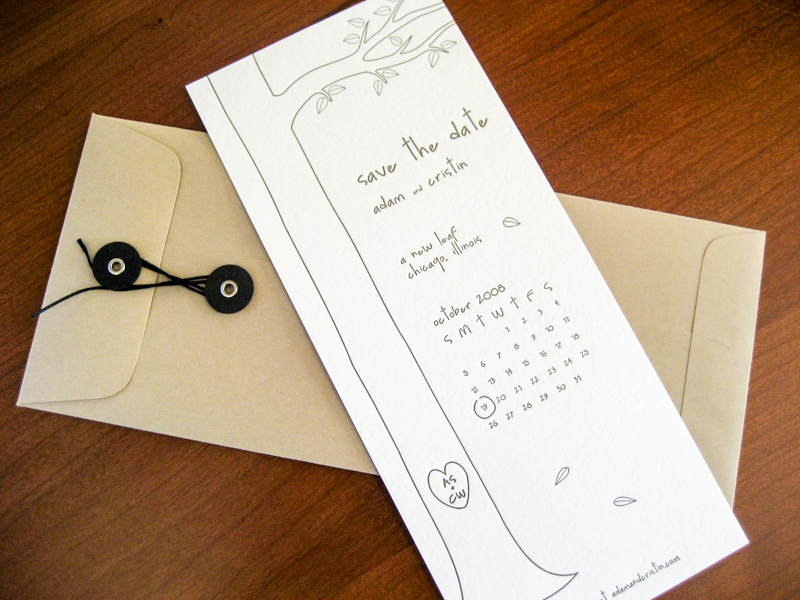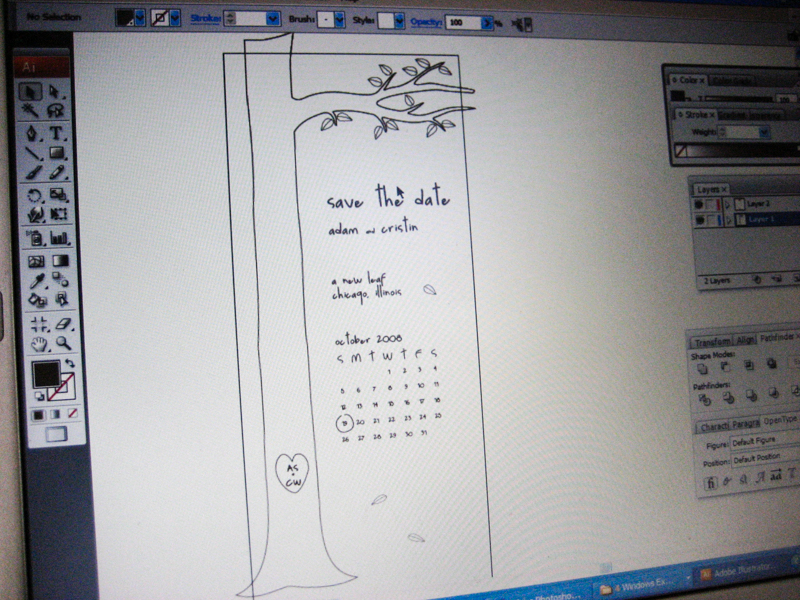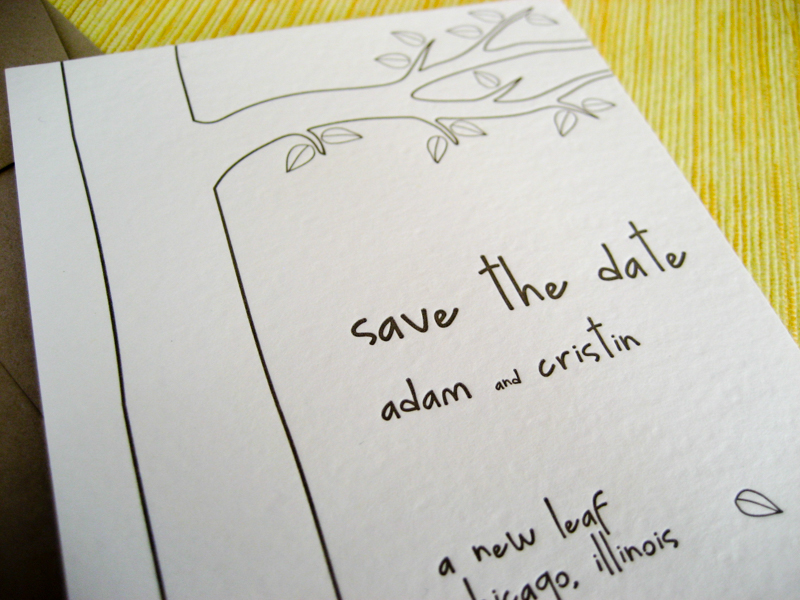As promised, I’m sharing the invites I designed for MOH-Ho’s wedding. I worked really hard on making these efficient (the set is printed on a single sheet of 8.5×11 cardstock). While I thoroughly enjoy receiving a pretty invite, I also feel terrible when I throw out fancy sets that include so much material. So, I was thrilled that MOH-Ho and her parents appreciated the compactness as much as I did!
Here’s the whole suite:

Instead of an inner envelope, I added matching circles with first names of guests to top the suite that is tied together by a cotton string:
A closer look at the directions/website card and the RSVP postcard:
Back of envelope and back of postcard:
The texture and color of the paper added the perfect touch! ![]()
Cost Breakdown for 100 invites:
Purple Metallic Envelopes (100): $24
Gold Linen Metallic Cardstock (100): $28
String from craft store: $2
Tax & Shipping: $8
Home printing cost not included, since I have no way to estimate it, and it would vary depending on your printer
Cost per invite suite: $0.62
Below is the template set for this invite suite, free for you to download:
CLICK HERE TO DOWNLOAD TEMPLATE PART 1 (PDF)
CLICK HERE TO DOWNLOAD TEMPLATE PART 2 (MS WORD)
Instructions:
- Download both templates
- Personalize text (change wording, color, font, sizes to suit your needs) in the Word document
- Print both templates on the same piece of atest sheet (be sure to recycle scratch paper if you have some around!)
- Modify text format and move text boxes as appropriate, then repeat step 3&4 on snew test sheet until satisfactory
- Print on paper of your choice (see my recommendations in post)
- Cut and assemble
Notes:
- Included are 3 cards, 1 label, 2 name tags
- 3 cards are identically sized, everything fits in a 4 bar envelope ( 3 5/8″x 5 1/8″)
- Postcard is slightly smaller than USPS standard (our local post office says they can still be mailed, just with a little more postage)
- The sample pic shown includes the Birch Std font
- Actual colors vary, depending on your printer
Enjoy!














































